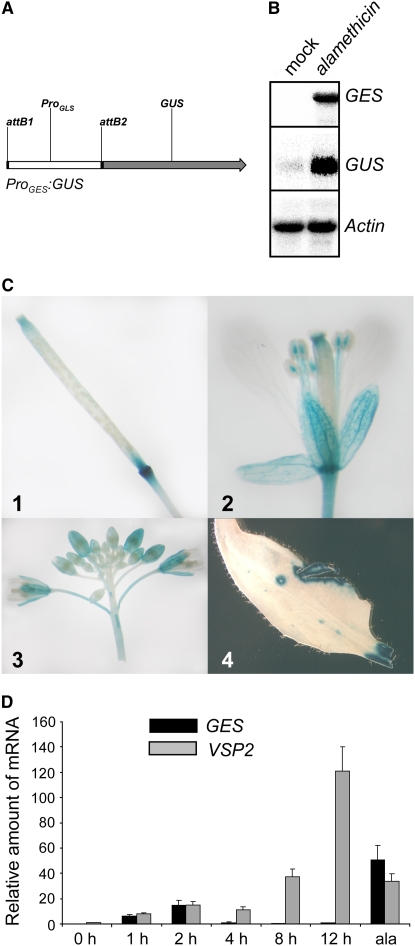Figure 10.
GUS Transcript Levels and GUS Activity in ProGES:GUS Plants.
(A) Schematic drawing of the ProGES:GUS construct. The GES promoter (−1162 to +3) was cloned upstream of the GUS reporter gene using Gateway technology. The attB2 site is part of the 5′ untranslated region of the GUS gene.
(B) RNA gel blot analysis of GUS and GES transcript levels in hydroponically grown transgenic ProGES:GUS plants after induction with alamethicin (5 μg/mL) or ethanol (0.1%) for 31 h.
(C) Histochemical GUS staining of a silique (1), a flower (2), an inflorescence (3), and a wounded leaf (4) from ProGES:GUS plants. The results are representative for at least 10 independent transgenic lines.
(D) GES expression in wild-type plants in response to wounding (1 to 12 h) and treatment with alamethicin (ala; 24 h). Six-week-old hydroponically grown plants were wounded with forceps. Leaf material within ∼3 mm adjacent to the wound marks was harvested. Material from five leaves was combined before extraction. Relative levels of GES and VSP2 (a wound-inducible control gene) were determined by real-time RT-PCR using SYBR Green I chemistry. Values were normalized to the expression of At1g13320 (protein phosphatase type 2). As a control, plants were treated with 5 μg/mL alamethicin through the roots, and RNA was harvested after 24 h. The results represent means + SE of three technical replicates. The experiment was repeated with similar results (see Supplemental Figure 5 online).

